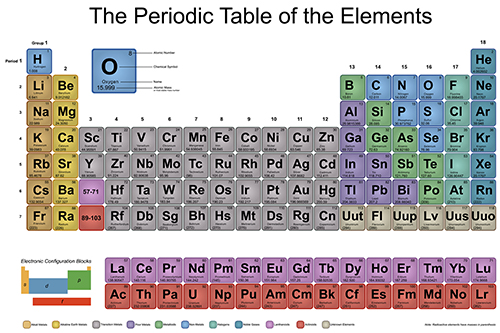Learn
Reactivity of Metals
The next trend we will look at is reactivity. Reactivity basically refers to how easily an element bonds with or interacts with a different element or it can also mean how easily an element goes through a chemical reaction.
Watch this video on What Makes an Element Reactive? to get an idea of what the term reactivity means.
For our discussion, we will focus on the reactivity of metals. Remember, metals are found on the left hand side of the Periodic Table.

See larger version of the periodic table here.
In general, the reactivity of metals increases as you move towards the bottom left of the periodic table.
Metals become reactive:
- the further down you go in a group
- the further to the left you go in a period
Comparing Reactivity
Let's try a few comparisons to see if you understand this periodic trend. Use the periodic table below to help you.

See larger version of the periodic table here.
- Which is more reactive: sodium (Na) or potassium (K)?
Answer: Potassium (K) is more reactive because it is further down in Group 1 than sodium (Na). - Which is more reactive: rubidium (Rb) or strontium (Sr)?
Answer: Rubidium (Rb) is more reactive because it is further to the left than strontium (Sr). - Which is less reactive: lithium (Li) or beryllium (Be)?
Answer: Beryllium (Be) is less reactive because it is to the right of lithium (Li) in the period.